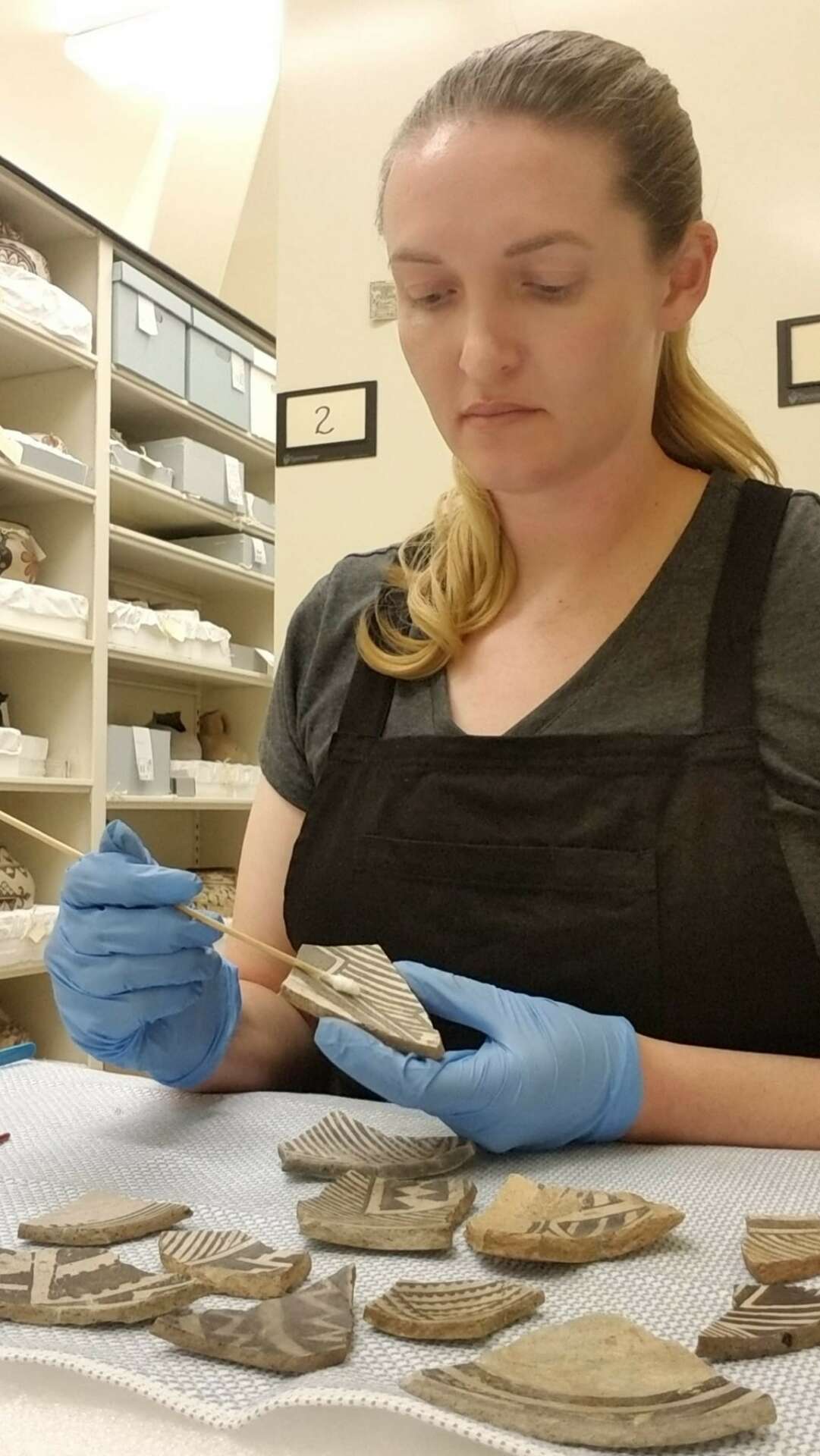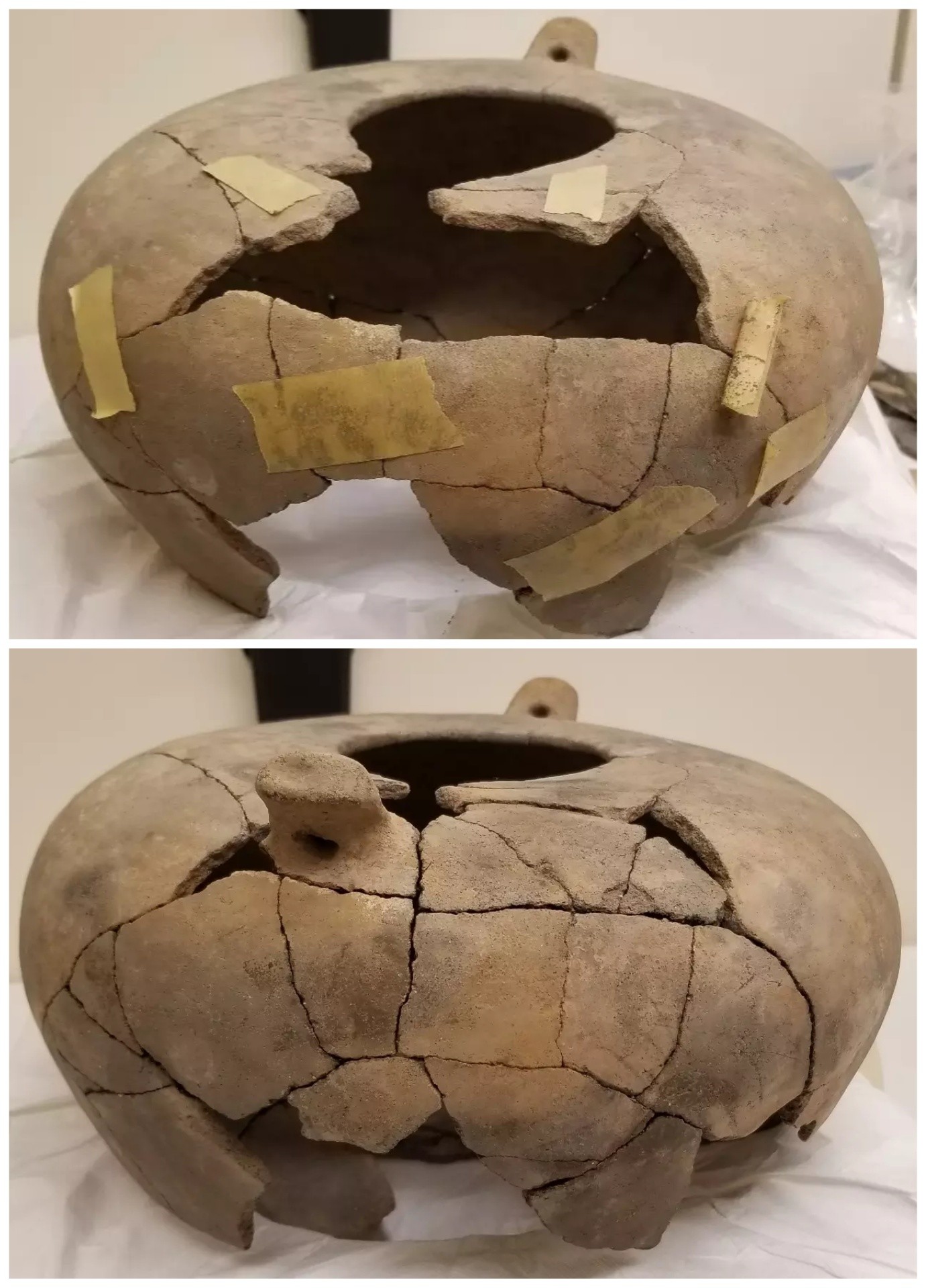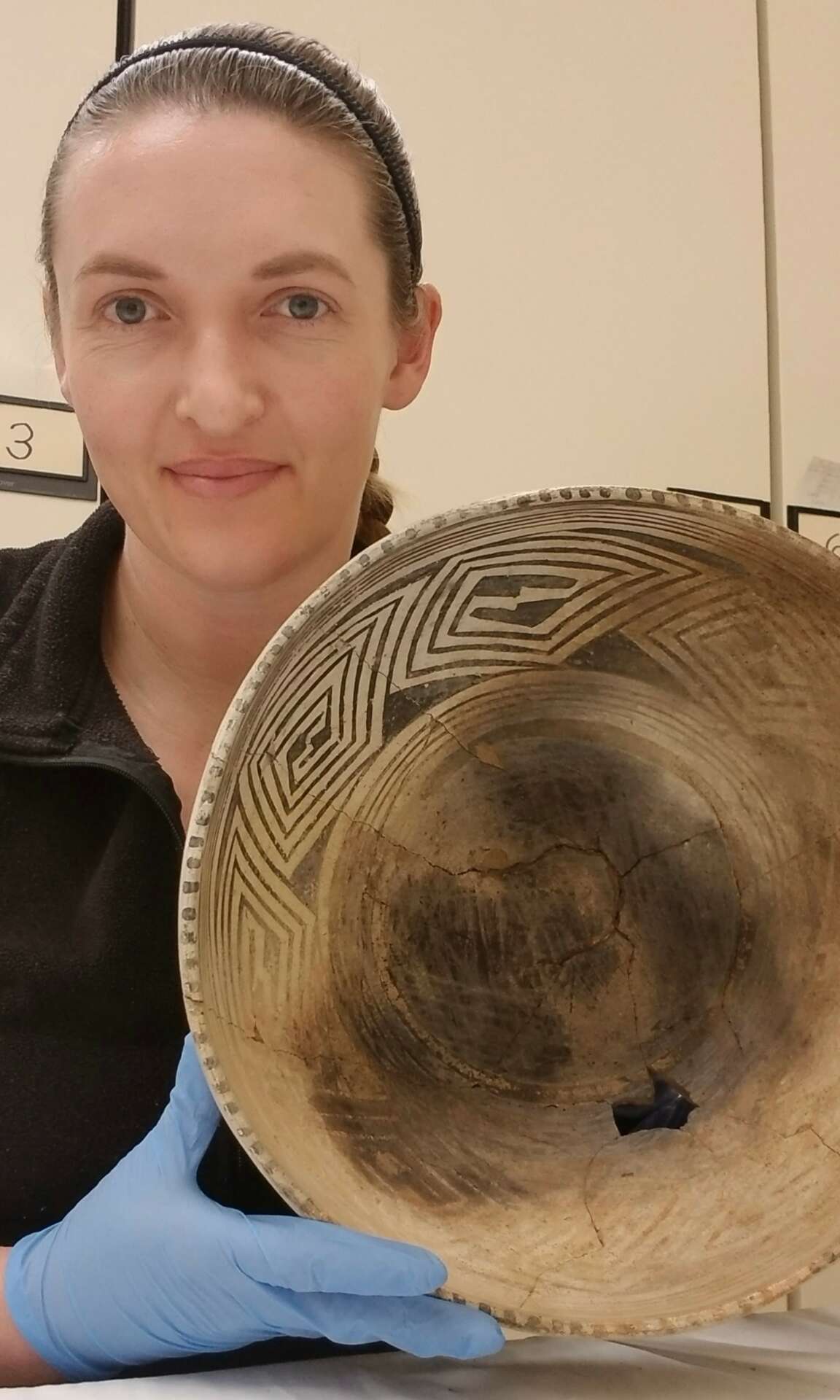We recently connected with Briana Paxton and have shared our conversation below.
Alright, Briana thanks for taking the time to share your stories and insights with us today. Can you talk to us about a project that’s meant a lot to you?
Between September 1, 2022 and July 8, 2023, I was contracted by the La Plata County Historical Society in Durango, Colorado to conserve over 75 pieces of Ancestral Pueblo pottery and several hundred pottery sherds in the Animas Museum collection. LPCHS was awarded an Inspire! grant through the Institute of Museum and Library Services (IMLS) to analyze, conserve, and properly identify the pottery with the intent of expanding the museum’s online research database and their Native American pottery exhibits. La Plata County is an ancestral home of Pueblo peoples and their artifacts were found in abundance by white settlers moving into the area over the past 150 years. Avocational archaeologists in the 1930s attracted the attention of professionals with the quantity and quality of the artifacts they collected. Most of these artifacts where acquired by larger institutions, but a relatively small collection was donated to the Animas Museum. Human remains and artifacts identified as funerary objects were returned to the Hopi tribe in 2016 per the Native American Graves Protection and Repatriation Act (NAGPRA). But many artifacts in the collection are not associated with burials and lack extensive data.
Much of the pottery collection was inexpertly conserved decades before it was donated to the museum. Broken pots were reassembled with nonarchival adhesives such as Elmer’s glue and epoxy. Some pots retained strips of masking tape that was used to hold sherds together while glue dried. I was tasked with undoing previous conservation attempts, mainly removing the nonarchival materials previously mentioned. After cleaning, I reassembled broken pottery with museum quality resin and added accession number tags to uncatalogued pieces. Once that was accomplished, I rehoused pots and sherds in archival storage compartments or boxes that are safe for long-term storage. Some of the IMLS grant funding helped the museum purchase additional display cases for its Native American gallery and many of the pots that I conserved are now on public display.

Briana, before we move on to more of these sorts of questions, can you take some time to bring our readers up to speed on you and what you do?
I am a multimedia artist and art conservator. I earned a BAFA in Studio Art from the University of New Mexico in 2010 and received training in museum conservation from New Mexico State University. Pursuing a career in museum conservation was my initial plan going into college. However, the years following the 2008 recession derailed that plan. Museums were hit hard during that time and a lack of job opportunities in conservation forced me to create my own. I left NMSU and started my own business, Briana Paxton Fine Art LLC in 2011.
I began my career as an oil painter and art restorer in private practice. My parents own an equine veterinary clinic, so I grew up around horses and other animals. This heavily influenced my early work, which primarily focused on horse and pet portraits. In addition to painting, I create intricate beaded skulls. My process is similar to the Mexican Huichol beaded skulls, but the designs draw inspiration from various indigenous cultures. As for the art restoration side of the business, I repair a variety of media but have become a specialist in Native American ceramics in recent years.
Ancestral Pueblo pottery is a life-long interest that began in elementary school. My school was built over an excavated pueblo site in the north valley of Albuquerque, New Mexico. The playground was littered with pottery sherds and projectile points and I spent many a recess scouring the ground for artifacts. Having the opportunity to assist the Animas Museum with its pottery conservation efforts was a way of getting back to my roots. It has fulfilled a childhood passion and enabled me to achieve what I had initially set out to do for my career in museum conservation.

What do you think is the goal or mission that drives your creative journey?
Being true to myself is the driving force behind my creative journey. For many years my art business was just a side hustle to supplement income from various primary jobs. While working a series of deeply unfulfilling jobs in non-creative industries, I found myself circling back to creative ventures that made me happy. So, I decided to take a leap of faith and focus on my own business and what I do best.


What do you find most rewarding about being a creative?
The most rewarding aspect of being an art conservator is restoring hope where hope is lost. Clients are frequently amazed by my ability to take damaged artwork that seems beyond repair and make it look new again. Art conservators are relatively rare, especially in small communities like Durango. Local galleries, institutions and art collectors are very appreciative of my services and to have someone with my skillsets nearby. I am also glad to assist organizations like the La Plata County Historical Society in preserving local history. My family has lived in the county since the mid-1870s, so conservation efforts are not only rewarding, but personally significant.

Contact Info:
- Website: https://www.brianapaxton.art
- Instagram: https://www.instagram.com/brianapaxtonart/
- Facebook: https://www.facebook.com/BrianaPaxtonArt
- Linkedin: https://www.linkedin.com/in/briana-paxton-art/
- Youtube: https://www.youtube.com/watch?v=bJJl0_Yf8h4
Image Credits
All images provided are my own photos.


